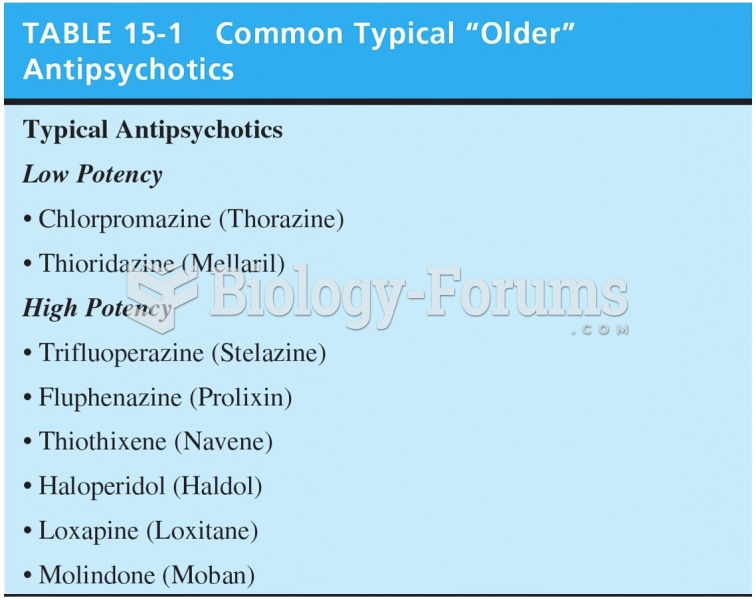Answer to Question 1
MYTH: Women encourage rape by their dress and actions.
TRUTH: Can you think one reason anyone would want to be raped? Of course not. A woman may dress and behave in certain ways because she is interested in appearing sexually attractive or wants to meet someone for consensual sex. But no one wants to be raped.
MYTH: Men who rape simply lose control over their sexual urges.
TRUTH: There are two main problems with this way of thinking. First, rape is not primarily a sexual act. It is the rapist's attempt to exert power and control over a victim through force, coercion, and violence. Most rapists are not sex-deprived, and many have an ongoing relationship with a consensual sexual partner. Furthermore, when people commit other crimes involving violence, we do not attempt to excuse their acts because, as men, they are unable to control their violent urges. Second, if men really were helpless puppets of their sexual urges, rape would be more universal than it is. Although rape is all too common, men with healthy sexual drives do not rape.
MYTH: Men who rape are mentally ill.
TRUTH: Although some rapists may have psychopathic tendencies, or other psychological disorders, mental illness among rapists is no more common that among the population in general. The vast majority of rapes, 80 to 90 percent in fact, are committed by someone the victim knows, is dating, or is involved with in a romantic relationship. Believing that rapists are mentally ill leads to a dangerous perception that potential rapists can be identified by their deviant behavior. This may lull potential victims into a false sense of safety with acquaintances, dates, or partners who are clearly not mentally ill but with whom the threat of rape is, statistically, the greatest.
MYTH: Women secretly want to be raped.
TRUTH: Although it is true that some women have reported fantasies involving rape, and that such fantasies are sometimes exploited in various media, this in no way implies that women want to be raped in real life. First of all, many people entertain fantasies, sexual or otherwise, that they would never want to happen in reality. Furthermore, in a fantasy of forced sex, the fantasizer knows that it is not real and that she is not in any real danger of bodily harm. In fantasy, the fantasizer is in control, whereas in a real rape, all control is taken away by the rapist. Most women who fantasize about being raped actually maintain control in the fantasy by luring or seducing the pretend attacker and playing the role of victim, knowing she is ultimately in control of the entire episode.
MYTH: Any woman can resist if she really wants to.
TRUTH: This myth is full of flaws. First, men, on the whole, are physically stronger and heavier than women and are capable of pinning a woman down, forcibly removing her clothes, and penetrating her. Beyond this, however, rapists use threats of violence, actual violence such as hitting and punching, and weapons to create a situation in which fighting back is obviously futile and to intimidate their victims into submission. In addition, some rapists commonly prey on women who are unable to resist due to extreme alcohol or other drug intoxication.
MYTH: Women falsely accuse men of rape.
TRUTH: The false reporting of rape is no more common than the false reporting of any violent crime; it is very rare. When it does happen, the woman nearly always recants before the crime is prosecuted. The exact opposite of this myth appears to be true. Many survivors of rape choose not to report the crime to authorities because of shame, guilt, fear of retaliation, or confusion over whether what happened to them was truly rape.
MYTH: Most rapes are committed by strangers.
TRUTH: The vast majority of the assailants are known to the victimthey are friends, classmates, acquaintances, boyfriends, husbands (or ex-husbands), or other family members. Rapes committed by strangers are terrible and traumatic (as are all rapes), but they are the exception, not the rule. The perception that rape is primarily committed by strangers can interfere with the important awareness of the much larger problem of rapes committed by men victims already know.
MYTH: All men are capable of rape.
TRUTH: The vast majority of men have not and would never engage in any sexually assaultive behaviors, including rape.
MYTH: Some women become aroused and have an orgasm during a rape, so they must enjoy it.
TRUTH: Part of sexual arousal and orgasm in women and men are merely reflexes over which we do not have any intentional control. These responses may occur during a sexual attack, just as a man may experience an erection and ejaculate while being raped. These reflexes in no way imply than any victim enjoyed or consented to being raped.
Answer to Question 2
Answer: D







